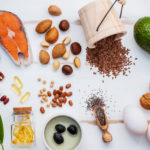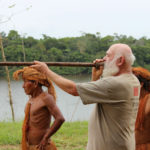Video: Growing Nature's Amazing Food: Berries!
British Columbia has the perfect climate to grow berries, one of nature’s amazing foods. Berries and even their seeds are a good source of fiber, rich in flavonoids and carotenoids, and high in antioxidants. From strawberries and raspberries to wild blackberries, tayberries and huckleberries, my garden always has a wide variety to choose from.
I often describe coastal British Columbia, where I have my summer home, as “berry heaven.” The climate and soils here are perfect for strawberries, black raspberries, loganberries and many more varieties. Berries comprise a large part of my diet during the summer and early fall months that I spend here. Berries of all kinds are excellent sources of fiber and rich in antioxidants. I grow strawberries, black raspberries, and an exotic Scottish hybrid known as the tayberry. This variety – each with a different harvest time, and supplemented by wild salal berries that grow in profusion on my property – ensures a steady supply of healthy, delicious berries from early July well into late summer.
See all of Dr. Weil’s videos here.
Video Transcript: Growing Nature’s Amazing Food: Berries!
I love berries. I mean, they’re low in glycemic load. They are full of protective phytonutrients, both the pigments that are in the fruit and a variety of compounds that are in the little tiny seeds. Seeds are also very high in fiber. And up here, it really is, berries were one of the staple crops of native peoples. There are a lot of wild berries; the main one that I harvest is our wild blackberries which are the last berry. That’s sort of late August, early September, great abundance of wild blackberries – delicious. The first berries I have are strawberries, which I cook and eat fresh; then followed by raspberries or the tayberries that I’ve planted. Then black raspberries and then, I don’t have blueberries here but people grow blueberries on the island, which are quite good. And then boysenberries, which are another favorite, they’re huge and delicious. And then there are the wild huckleberries here.
There are salal berries and it’s the blackest berry I’ve ever seen. It’s almost black all the way through and it’s got a really tough skin and a lot of these protective compounds are found in the skin. So the combination of that deep pigmentation, a tough skin and little seeds, I suspected that this would be very high in antioxidants and the preliminary tests that I ran did make it look like it was higher than any other berry.
I’ve grown strawberries on the ground a lot, and there are a number of problems with that. First of all, they get dirt on them. Secondly, they’re in contact with the wet ground and they tend to mold easily. There’s not air circulation and the main problem is that it really hurts your back picking them; especially when you have a big quantity of them. So I saw someone that was growing these strawberries in troughs that were elevated, looked like a very good idea. So I’ve shifted half of my strawberry beds to those and the other half will get shifted next year.









